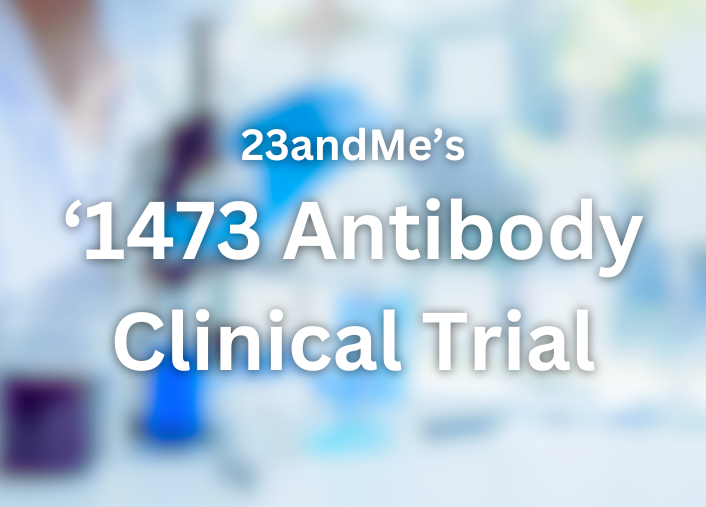Affinity DNA: Everything You Need To Know
harvey
on
March 22, 2024
Latest Posts
Table of Contents
Affinity DNA: Everything You Need To Know
Date of Content: March 21, 2024
Written by: Avanthika Nityanand
Reviewed by: Maarit Tiirikainen, PhD
Affinity DNA is a company that specializes in providing DNA testing services for several purposes, including, but not limited to, paternity testing, genetic predisposition for certain health conditions, ancestry, and relationship testing. They cater to individuals seeking more information about their biological relationships and genetic makeup, offering accurate, confidential, and easy-to-understand results. With a commitment to privacy and ethical standards, Affinity DNA utilizes state-of-the-art genetic testing technologies to deliver reliable insights into your genetic information, fostering a deeper understanding of personal and familial connections, health predispositions, and ancestral origins. Their services are accessible and user-friendly, allowing customers to submit DNA samples easily and receive their results securely.

Paternity DNA Test
Their home DNA paternity tests are available from $119, with results delivered within 3-5 working days. For urgent cases, they also offer an express service. The company provides a home DNA collection kit for quick and painless sample collection, accompanied by easy-to-follow instructions. Additionally, they offer the option of professional sample collection by a medical expert and provide AABB-accredited legal DNA test results suitable for court proceedings or immigration purposes.
This company stands out as the only DNA testing provider to extend a money-back guarantee on their paternity tests involving the mother. The company guarantee a conclusive “yes-or-no” result for customers purchasing a test from their website for testing an alleged father, mother, and child, or they will refund the purchase. They highlight the importance of including the mother’s DNA in the test for enhanced accuracy and strongly recommend this practice whenever feasible.
Check here for more information on their complete range of paternity tests.
Relationship DNA Test
Relationship DNA tests are commonly utilized to ascertain paternity in scenarios where the alleged father has passed away, is absent, or refuses to participate in the testing process. Yet, other relatives like the alleged father’s siblings, parents, or the child’s sibling are accessible.
While a paternity test would yield more definitive outcomes, it necessitates the availability of DNA samples from the alleged father.
For further details, their array of relationship tests encompasses sibling DNA testing kits, twin DNA testing, tests for grandparents, and DNA tests for aunts or uncles, alongside maternity DNA tests.
Y chromosome (Y-DNA) testing is available to verify if two males share the same paternal lineage. In contrast, mitochondrial DNA (mtDNA) testing determines whether two individuals, regardless of gender, share the same maternal lineage.
The company also provides Surrogacy DNA testing, catering to the needs of IVF babies or adoption scenarios, and genetic reconstruction DNA testing. This latter option establishes paternity or maternity in cases where the alleged parent is unavailable.
Their website provides a comprehensive overview of all their relationship DNA testing services.
Non-Invasive Prenatal Testing
Non-invasive prenatal testing employs cutting-edge technology to determine paternity or ascertain the baby’s gender, avoiding the dangers associated with invasive methods like amniocentesis or chorionic villus sampling.
This type of prenatal paternity testing becomes an option from the 9th week of pregnancy onwards. A nurse or a healthcare professional draws the expectant mother’s blood sample for the test.
The company is prepared to assist in locating the closest sample collection facility if needed. Interested parties are encouraged to reach out using the Contact Form, providing the zip code for the desired sample collection location. Currently, information regarding sample collection facilities is shared only via email.
Additional details on non-invasive prenatal testing are available here.
Ancestry DNA Tests
DNA Origins
The DNA Origins test, priced at $159, delivers an estimated ancestry percentage for the individual tested across four primary population groups: European, Indigenous American, Sub-Saharan African, and East Asian. The results are in a table format on a certificate, which also features a bar graph for efficiently interpreting the findings.
Recipients will obtain a personalized certificate and a results manual in PDF format (ideal for print and display). This manual aids in understanding the results and provides insights into ancestry testing and the history of human migration.
AffinityDNA’s Ancestry DNA includes the DNA Origins test, offering ancestral estimates for:
- European: This group encompasses not just Europeans but also Middle Easterners and South Asians from India, based on research indicating shared ancestral markers among these populations from 10,000 to 50,000 years ago.
- Indigenous American: This category includes the diverse groups that migrated to North, South, and Central America.
- Sub-Saharan African: This group covers individuals with ancestral ties to the Sub-Saharan region of Africa.
- East Asian: This includes the Japanese, Chinese, Koreans, and Pacific Islanders population.
Paternal Lineage Ancestry Test
The Paternal Lineage Ancestry DNA Test provides insights into paternal lineage. The test reveals your ancestral origins by integrating the latest advancements in genetics, anthropology, and genealogy. This process involves examining the Y chromosome, particularly focusing on DNA sequences known as Short Tandem Repeats (STRs). It is possible to trace one’s unique paternal lineage by analyzing these crucial parts of DNA.
The analysis reveals the individual’s paternal haplogroup affiliation, a critical concept denoting the set of genes inherited from ancient ancestors. These gene sets are distinctive and specific to a group of people, shared by all members within that group. Haplogroups can often be associated with precise geographical regions, allowing for the mapping of ancestral migration paths. By comparing an individual’s DNA with the vast array of haplogroups in the database, we can establish a connection to their specific haplogroups, offering insights into their paternal roots.
The sample is collected using a mouth swab. The test is available for $149, with results delivered within 6-7 weeks after the samples are received.
Maternal Lineage Ancestry Test
The Maternal Lineage Ancestry DNA Test is a comprehensive laboratory-based assessment designed to unveil the profound and extensive history of one’s ancient maternal ancestors. Without such a DNA test, the intricate details of one’s maternal lineage would remain concealed.
Biological relatives sharing a common maternal ancestor will possess identical genetic sequences within their mtDNA profiles, categorizing them under the same mtDNA family. However, mtDNA sequences vary across different families, serving as unique identifiers of maternal ancestry. These variations enable the precise matching of an individual’s and their family’s mtDNA to their specific haplogroup or ancient maternal clan. Every person can be accurately assigned to their family haplogroup utilizing these inherited genetic sequences, offering unparalleled insights into their direct maternal heritage.
Priced at $169 with results delivered in 6-7 weeks.
GPS Origins Ancestry Test
GPS Origins™ Ancestry Test offers individuals the opportunity to explore their ancestral background. This DNA testing service is designed to reveal the geographical origins of one’s ancestors, pinpointing countries, cities, and sometimes even the exact islands their forebears hailed from.
Leveraging state-of-the-art genealogy and tracking technologies, the GPS Origins™ Ancestry Test claims to provide precise identification of ancestral origins with remarkable accuracy.
The GPS Origins™ Ancestry Test employs the latest developments in genealogy and genetics, incorporating the Geographic Population Structure (GPS), an innovative tool for ancestry tracking.
Distinct from other ancestry tests that trace lineage back several millennia, the GPS Origins™ Ancestry Test specializes in uncovering more recent genealogical ties, tracing back approximately 1000 years. This refined focus allows the test to identify specific countries, and in certain cases, it can provide detailed information about an ancestor’s originating island, town, or village.
It is priced at $159, with results available within 4 to 6 weeks.
DNA Health Tests
Note: In compliance with New York State Department of Health regulations, shipping to New York residents is impossible for any of the tests below. Any orders originating from the New York State will be canceled.
Know Yourself DNA Test
The Know Yourself DNA Test offers an enlightening journey into one’s genetic blueprint, serving as a detailed guide to comprehending one’s genetic distinctiveness. This thorough examination of DNA provides invaluable insights into various aspects:
- Diseases: It allows individuals to identify their genetic predisposition to more than 100 diseases, offering a chance to take preemptive measures for a healthier life ahead.
- Pharmacological Compatibility: The test elucidates how one’s body processes various medications, aiding healthcare providers in customizing prescriptions and treatment plans for tailored healthcare.
- Wellness: Insights into how one’s genetics influence their response to exercise, dietary habits, and detoxification can assist in tailoring lifestyle choices for optimal well-being.
- Ancestry: Individuals can delve into their lineage, discovering the intricate journey of their forebears and tracing their heritage across generations.
- Personal Traits: The test uncovers the genetic traits that contribute to one’s personality, highlighting strengths and pinpointing potential challenges, offering a deeper understanding of oneself.
Food Intolerance Test
For individuals experiencing symptoms like headaches, fatigue, bloating, constipation, or skin rashes, these could indicate an intolerance or sensitivity to certain substances.
The comprehensive Food Intolerance Test helps identify potential triggers among up to 900 items, including common foods, beverages, and non-food substances such as pollen and pet dander. This detailed examination extends to detecting sensitivities, nutritional deficiencies, gut biome health, hormonal imbalances, and metal sensitivities. The test is performed by highly skilled and qualified scientists and conducted in a facility that has analyzed over 400,000 samples globally and undergoes regular audits by independent bodies. Utilizing the most advanced equipment and methodologies, they ensure the highest level of precision in the results.
Priced at just $99, with results delivered in 3-5 days.
Vegetarian Food Intolerance Test
For vegetarians experiencing adverse reactions potentially due to certain vegan or vegetarian foods, the Vegetarian Food Intolerance Test analyzes 450 prevalent vegan food items and non-food substances to identify the source of such symptoms.
Included with the test is a detailed guide designed to assist in reducing or eliminating these identified triggers from one’s diet, aiding in the management of intolerances.
Available for $88, with results provided within 2-5 days
Gut Microbiome Test
The human gut hosts a diverse community of around 37 trillion microorganisms, including bacteria, fungi, and viruses, collectively known as the gut microbiome. These microorganisms are predominantly beneficial, playing critical roles in food digestion, vitamin metabolism, and overall health maintenance. A varied microbiome is crucial for gut health and overall well-being.
The Gut Microbiome Test reveals the balance of nutrition and the gut ecosystem, indicating whether dietary modifications are necessary to enhance bacterial composition and overall health. It’s essential to recognize that only sustained healthy dietary habits can foster an improved microbiome composition.
Lifestyle and environmental factors influence the composition of the gut microbiome. Persistent deficiency or imbalance in certain bacteria may contribute to health issues such as obesity, digestive disorders, and autoimmune diseases.
Ongoing research into the microbiome has highlighted its significant influence on aspects ranging from mood to the risk of serious health conditions, earning it the nickname “the forgotten organ.”
Gut Microbiome Test results provide insights into:
- The bacterial population in the gut
- The influence of gut bacteria on the body
- The presence of beneficial versus harmful bacteria
- The relationship between gut bacteria and obesity risk
- The balance between diet and microbiome community, with recommendations for dietary adjustments to achieve a balanced microbiome.
Skin Care DNA Test
Each skin type requires specific care, and skin concerns extend beyond the basic classifications of dry, oily, or normal. It includes issues such as aging signs, pigmentation, and inflammation. A Skin DNA Test offers a method to understand these concerns more in-depth, providing insights based on genetic analysis. The test is for individuals seeking detailed information about their skin needs. It guides the selection of skincare products through scientific analysis of the individual’s DNA. The test, which is quick and non-invasive, is priced at $169 and aims to offer a personalized approach to skincare.
Check out the LifeDNA Skincare report
DNA Diet And Healthy Weight Test
Individuals who struggle with weight loss despite diet and exercise may find that their genetic makeup plays a significant role in their weight management challenges. Genetics can influence the ease or difficulty of maintaining a healthy weight, although it is not the sole factor.
The DNA Diet and Healthy Weight Test aims to uncover genetic factors that might be contributing to nutrition and weight management issues.
The test provides a comprehensive genetic profile covering several key areas:
- Weight Loss Ability: It evaluates the body’s capacity for weight loss and maintenance by identifying genetic predispositions that may facilitate or hinder weight management efforts.
- Macronutrient Ratios: By analyzing genetic data alongside personal metrics such as age, height, and gender, the test suggests optimal ratios of fats, carbohydrates, and proteins for the individual’s diet.
- Nutrient and Vitamin Requirements: Beyond weight management, the test offers guidance on nutritional needs to ensure overall health and prevent deficiencies, highlighting the importance of vitamins and micronutrients for bodily functions.
- Exercise Regimen Response: Individuals respond differently to various forms of exercise. This aspect of the test determines how one’s body reacts to activities like cardio and strength training and recommends exercise intensity and frequency based on genetic makeup.
Review the LifeDNA Nutrition Report & Vitamins & Supplements Report
Food and Pet Sensitivity Test
Individuals experiencing stomach pain, diarrhea, and bloating post-consumption may be dealing with food intolerances or sensitivities to certain substances. The Food and Pet Sensitivity Test is designed to identify sensitivities to a range of common food items, including lactose, eggs, peanuts, gluten, yeast, soy, fish, shellfish, and corn, among others. Food sensitivity occurs as the body’s reaction to ingested food, distinguishing itself from allergies by the delayed onset of symptoms.
Additionally, this service encompasses a Pet Dander Test, evaluating sensitivity towards pet dander (fur, hair, feathers) through genetic markers. Moreover, it examines histamine levels, determining the body’s ability to metabolize excess histamine in fermented foods, such as wine.
The DNA testing service ascertains genetic predispositions towards specific foods and substances utilizing analysis of 30 genetic markers (SNPs) covering:
- Gluten
- Lactose
- Cow Milk Protein
- Egg
- Peanut
- Histamine
- Pet Dander
- Other Foods: including tree nuts, soy, soybean, corn, yeast, fish, shrimp, apples
Priced at $139, with results available in 6 weeks, this comprehensive test offers valuable insights for those seeking to understand their food and pet sensitivities.
View other tests on the Affinity DNA site.
Privacy
Affinity DNA takes all necessary precautions to protect user data to the fullest extent possible. It includes implementing security policies, rules, and technical measures for safeguarding personal information. However, they acknowledge that the Internet inherently lacks complete security, and data transmitted online may be vulnerable to unauthorized actions by third parties.
As such, no liability will be assumed for any breaches that occur during data transmission via the Internet. If there has been a compromise of personal data under their control, users will be informed through email.
At LifeDNA, we understand the responsibility of handling our customers’ privacy. This is why we have never had a security breach and continue to ensure the safety and security of your data.
From our Chief Privacy Officer
Alternative to Affinity DNA: Why LifeDNA?
LifeDNA has emerged as a prominent option for analyzing existing DNA data from 23andMe and many other raw data sources in addition to offering our own proprietary sample collection kits. Our reports feature a combination of unique offerings and a commitment to personalized wellness.
We offer a basic DNA raw data analysis package to kickstart your journey. Users with raw data from 23andMe, AncestryDNA, etc., can access 194+ traits across interest areas such as Nutrition, Wellness, Vitamins and Supplements, Personality, Fitness, Sleep, Methylation, and Skincare.
Further, if you do not have raw DNA data, such as from 23andMe, LifeDNA provides that too. Start your personalized wellness journey with LifeDNA’s state-of-the-art DNA kits here.
Here is why many regard LifeDNA as the best option for making the most of your 23andMe, AncestryDNA, and other raw data:
- Holistic Approach to Wellness: Unlike many other platforms that focus strictly on health-related risks or ancestry, LifeDNA adopts a holistic approach. We analyze genetic data to offer personalized optimizations for nutrition (including a customized grocery list!), skin care, vitamins & supplements, wellness, personality & cognition, and fitness. This range lets users get a complete picture of their wellness needs based on their DNA.
- Product Recommendations: We go beyond just providing insights. We offer specific product recommendations, skincare ingredients, or supplements tailored to an individual’s genetic profile. It makes our service actionable, allowing users to make immediate changes based on their results.
- Data Security: At LifeDNA, we place a high emphasis on protecting user data. Our commitment to privacy ensures that users can trust the platform with their sensitive genetic information.
- User-Friendly Reports: LifeDNA reports are easy to interpret. Our reports are designed to be accessible to the layperson without compromising on the depth and accuracy of the information.
- Continual Updates: As genetic research evolves, so does LifeDNA’s platform. Users can expect their reports and insights to be updated with the latest scientific findings.
- Dedicated Research and Development: At LifeDNA, we invest in research to continually refine our algorithms, ensuring that the insights provided are based on cutting-edge science.
- Educational Resources: LifeDNA also provides ample resources for users to understand their genetic makeup better. This education-first approach demystifies the complex world of genetics, making it approachable and actionable for everyone.
- Scientific rigor: To create an unmatched commitment to scientific rigor, LifeDNA partners with CLIA-certified, CAP-accredited, and HIPAA-compliant laboratories.
Customer Reviews




*Understanding your genetics can offer valuable insights into your well-being, but it is not deterministic. Your traits can be influenced by the complex interplay involving nature, lifestyle, family history, and others.
Our reports and suggestions do not diagnose or treat any health conditions or provide any medical advice. Consult with a healthcare professional before making any major lifestyle changes or if you have any other concerns about your results.



















